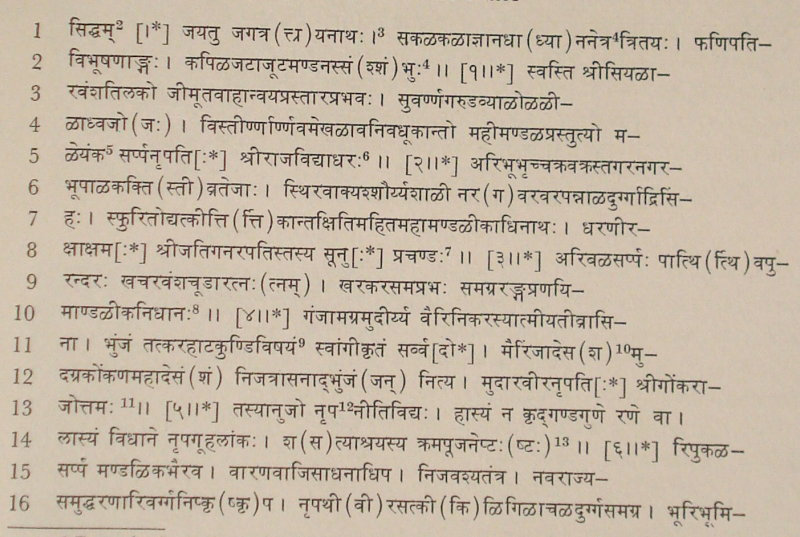|
The Indian Analyst
|
North Indian Inscriptions |
INSCRIPTIONS OF THE SILAHARAS OF KOLHAPUR
(expressed in words only), when the cyclic year was Vilamba. The date is quite regular. Kielhorn has shown that in Śaka 980 expired, which by the southern luni-solar system was Vilamba, the Uttarāyaṇa Saṅkrānti took place 10 h. 18 m. after mean sunrise of Thursday, the 24th December, A.D. 1058, during the 7th tithi of the bright fort-night which ended 17 h. after mean sunrise the same day. ..Of the localities mentioned in the present grant, Miriñjadēśa evidently comprised the territory round modern Miraj. Karahāṭa is modern Karhāḍ, and Kuṇḍī represents the region round modern Beḷgaon. The Khiḷigiḷa fort is evidently identical with the fort of Panhāḷā. The donated village Kuṇṭavāḍa is modern Kuṭwāḍ on the bank of the Kṛishṇā, ancient Kṛishṇavērṇā, about 21/2 miles east of Śiroḷ, corresponding to ancient Sirivōḷaḷa, the chief town of the territorial division of that name. The neighbouring villages mentioned in the present grant, viz. Kannavāḍa, Hāḍalivāḍa and Gāḷikuṭṭi are respectively identical with modern Kanvāḍ, Hasur and Ghaḷvāḍ which lie in the stated directions.
TEXT[1]
[1] From the facsimiles in I.C.T.W.I.
|
|||||||||||||||||||||||||||||||||||||||||||||||||||||||||||||||||||||||||||||||||||||||||||||||||||||||||||||||||||||
| > |
|
>
|








